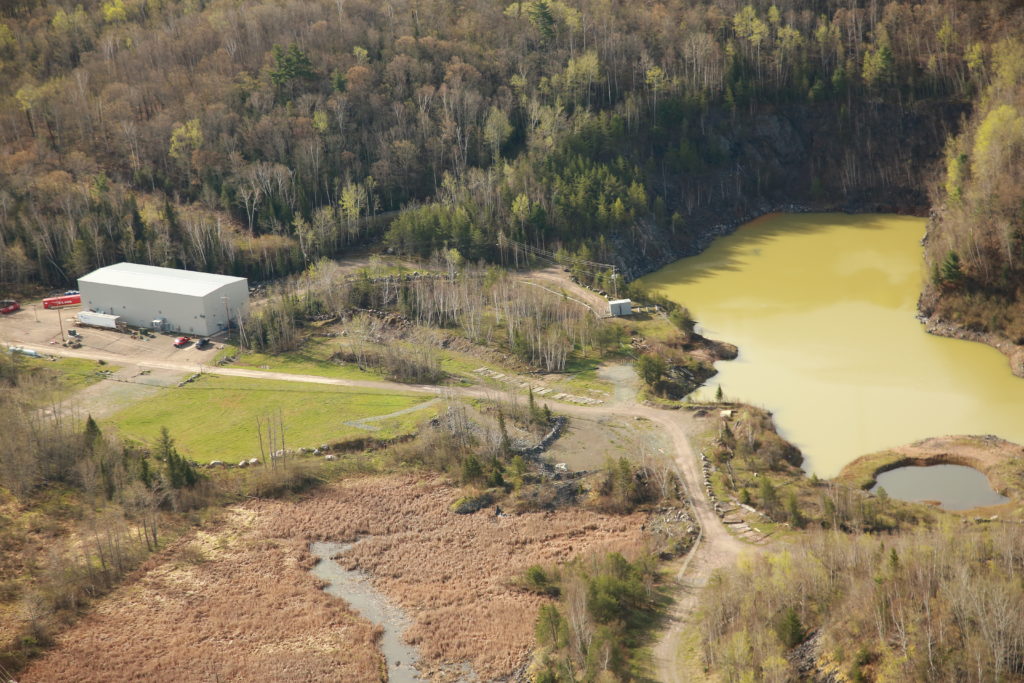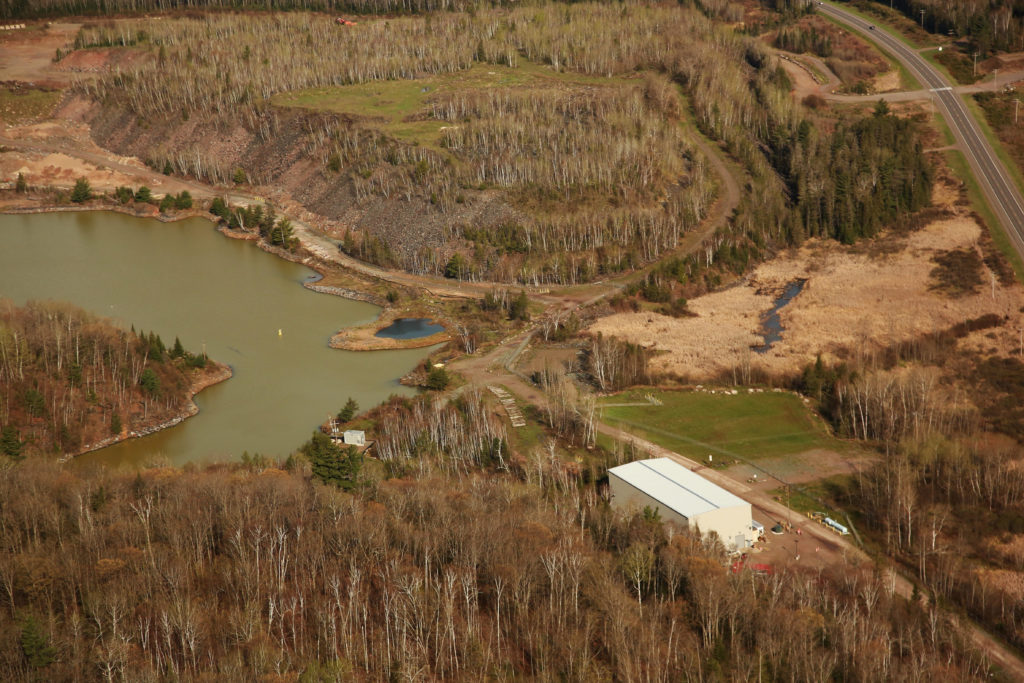Humboldt Mill Permit Amendment Request – Comments

Aerial photograph showing Humboldt Mill Wastewater Treatment Plant, and the north end of the Humboldt Pit Lake, referred to by the permit amendment request as the “Humboldt Tailings Disposal Facility” (HTDF) or the “facility.” Photo by Jeremiah Eagle Eye, 2017.
“We are concerned that Michigan law (especially Part 301, with regards to the filling of Humboldt Pit Lake with toxic mine tailings) and the Clean Water Act are being applied inconsistently, and that regulations are improperly interpreted. The Humboldt Pit Lake is treated, simultaneously, as an “Inland Lake” according to Michigan’s Part 301 Inland Lakes and Streams Program, but not regarded as “waters of the state” under Part 31. The DEQ’s stewardship of Michigan’s freshwater natural resources is the shared interest and responsibility of all stakeholders. Concerned citizens, the Keweenaw Bay Indian Community, the Community Environmental Monitoring Program, the Mining Action Group and other UPESG stakeholders have all expressed our concerns regarding Lundin’s use of the Humboldt Pit Lake as a “waste disposal facility” which appears to violate common sense, as well as the law. We ask the DEQ to regulate this body of water in full accordance with the Clean Water Act and NREPA, keeping in mind that Michigan citizens and the Escanaba River Watershed will bear the burden of these polluting activities long after Lundin’s mining and milling operations have ceased.
We believe the Humboldt Mill amendment request does not fulfill the requirements of Part 632. The applicant failed to provide an updated EIA, failed to update the reclamation plan, dismissed the contingency plan, failed to provide a list of all additional necessary permits, and did not increase the financial assurity to offset the significant, permanent environmental hazards posed by additional tailings storage and reduced water cover at the Humboldt Pit Lake.
The Applicant has Not Met the Standard for Review
Furthermore, the DEQ has a statutory requirement under Section 324.63207 (6)(c) of Part 632 to “submit the request for amendment to the same review process as provided for a new permit application” and consolidate multiple permits into a single review process, to facilitate public participation.
The DEQ has Not Met this Statutory Requirement
The permit amendment request is fundamentally incomplete, as it falsely and narrowly limits discussion to a single permit condition; because Condition F.4 is being considered apart from other connected permits and deprecated permit conditions, steamrolling the permit process without offering an opportunity for public input; and because the applicant provides no supporting material, with no updated analysis of the cumulative Environmental Impacts.
“DEQ shall deny a permit if it determines that the mining operation will “pollute, impair, or destroy, air, water or other natural resources or the public trust in those resources, in accordance with part 17 (Michigan Environmental Protection Act.)”
This permit amendment request is obviously unsubstantiated and incomplete. Environmental stakeholders are unable to consider the implications of such a significant change, in the absence of monitoring data, modeling, and the lack of a revised EIA. Confident predictions made by Lundin’s experts in public presentations do not change our conclusion. Please deny the Humboldt Mill MP-012010 permit amendment request, on the grounds that it fails to meet the standard for review as required under Part 632.

Aerial photograph showing Humboldt Mill Wastewater Treatment Plant, and the north end of the Humboldt Pit Lake, referred to by the permit amendment request as the “Humboldt Tailings Disposal Facility” (HTDF) or the “facility.” Photo by Jeremiah Eagle Eye, 2017.
Read the Mining Action Group’s full public comments on the Humboldt Mill Permit Amendment Request, Condition F.4 of MP-012010, here.
Thank you for your efforts to safeguard our precious freshwater.